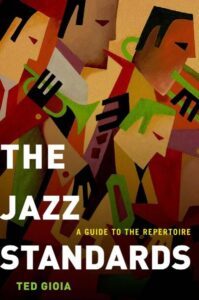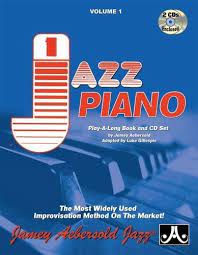Browse in the Library:
Or browse in the categories menus & download the Library Catalog PDF:
Autumn is a second spring when every leaf is a flower.
Albert Camus
Autumn jazz music
Track Listing:
Track 1: Joy of Love (starts at 00:00) Track 2: Two of Us (starts at 04:56) Track 3: Bay of Paradise (starts at 08:56) Track 4: One More Time (starts at 12:45) Track 5: Schroeder and I (starts at 16:34) Track 6: Autumn Scents (starts at 21:32)
Track 7: A Brighter Day (starts at 24:36) Track 8: Road to Enlightenment (starts at 29:25) Track 9: Sweet Whispers (starts at 35:06) Track 10: Hand in Hand (starts at 38:00) Track 11: Rendezvous (starts at 42:56) Track 12: Paradise Shores (starts at 47:07)
Autumn jazz music
Jazz is a kind of music in which improvisation is typically an important part. In most jazz performances, players play solos which they make up on the spot, which requires considerable skill. There is tremendous variety in jazz, but most jazz is very rhythmic, has a forward momentum called “swing,” and uses “bent” or “blue” notes.

You can often hear “call–and–response” patterns in jazz, in which one instrument, voice, or part of the band answers another. (You can hear Ella Fitzgerald and Roy Eldridge do “call and response” in Ella’s Singing Class.) Jazz can express many emotions, from pain to sheer joy. In jazz, you may hear the sounds of freedom-for the music has been a powerful voice for people suffering unfair treatment because of the color of the skin, or because they lived in a country run by a cruel dictator.
Jazz musicians place a high value on finding their own sound and style, and that means, for example, that trumpeter Miles Davis sounds very different than trumpeter Louis Armstrong (whose sound you can hear in Louis’s Music Class.) Jazz musicians like to play their songs in their own distinct styles, and so you might listen to a dozen different jazz recordings of the same song, but each will sound different.
The musicians’ playing styles make each version different, and so do the improvised solos. Jazz is about making something familiar–a familiar song–into something fresh. And about making something shared–a tune that everyone knows–into something personal. Those are just some of the reasons that jazz is a great art form, and why some people consider it “America’s classical music.”
Jazz developed in the United States in the very early part of the 20th century. New Orleans, near the mouth of the Mississippi River, played a key role in this development. The city’s population was more diverse than anywhere else in the South, and people of African, French, Caribbean, Italian, German, Mexican, and American Indian, as well as English, descent interacted with one another. African-American musical traditions mixed with others and gradually jazz emerged from a blend of ragtime, marches, blues, and other kinds of music.
At first, jazz was mostly for dancing. (In later years, people would sit and listen to it.) After the first recordings of jazz were made in 1917, the music spread widely and developed rapidly.

The evolution of jazz was led by a series of brilliant musicians such as Louis Armstrong, Duke Ellington (listen to Ellington in Duke’s Music Class), Charlie Parker, and Miles Davis. Jazz developed a series of different styles including traditional jazz, swing (listen, for example, to Benny Carter, who got his start in swing music, in Benny’s Music Class) bebop, cool jazz, and jazz rock, among others. At the same time, jazz spread from the United States to many parts of the world, and today jazz musicians–and jazz festivals–can be found in dozens of nations. Jazz is one of the United States’s greatest exports to the world.

Of course jazz wasn’t born on a particular day – it was created over time. It was a meeting, a mixing, a melding of many cultures, many emotions and many skills.
Find lots of Jazz sheet music and transcriptions in our Library.
Some say jazz grew out the drumming and Voodoo rituals that took place in New Orleans’ Congo Square before the Civil War. Others say jazz was born in 1895, the year Buddy Bolden started his first band.
Still others say it happened in 1917, when Nick LaRocca and his Original Dixieland Jazz Band recorded the first jazz record, “Livery Stable Blues.” But Ferdinand “Jelly Roll” Morton had his own theory. He said, “It is evidently known, beyond contradiction, that New Orleans is the Cradle of Jazz, and I myself happen to be the inventor in the year 1902.”
